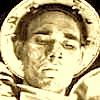
Posted
When using the mouse to draw out shapes, it would be great if synfire could take a held midi note and use that as the starting point. This would save a lot of hunting and pecking trying to find the right note and octave graphically.
For instance, I just tried to make a extended trill on a flute. When I drew in a line of 16th notes they drew in two octaves low and at the wrong note. Of course I was able to shift them up to the correct range and use the arrow key to shift it through the scale steps until i found the right one but its hardly the most efficient way.
EDIT:
I thought about this and this could be expanded in a very useful way. Instead of holding the note and then clicking, reverse it. While the mouse button is held down, notes from the keyboard would be added to an array that would be used as the pattern. As long as the mouse is still down, notes can still be added.
[C1 C1 D#2 C1 G#1]
If a straight line is drawn, that sequence would be repeated corresponding to the number of symbols created. If the line was angled then the sequence would follow the shape of the line.
This could be further expanded by allowing the user to use the notes in a segment as the pattern (maybe, with the segment selected, using the right or middle mouse button to draw the line)
Also
It would be great to see some functions to aid in selecting different patterns of notes intelligently. For instance, if I started selecting every other note to create the trill, Synfire would have a hotkey to repeat the same pattern of selection. This could be applied to more complex selection patterns and other criteria as well.
Many 3d modeling applications have this sort of functionality to aid in selecting the many thousands of edges and vertices in logical ways.
Sun, 2009-08-02 - 05:39 Permalink
I had another thought on the topic of drawing patterns. In addition to being able to fill a pattern set with the keyboard, while the mouse button is down, perhaps the number keys could be used to define the lengths (the the number keys corresponding to the grid snaps eg 1,2,4,6,8,12 )
Complex pattern could be created very quickly with just a few inputs especially if the number of elements in the pitch and rhythmic sets are different, causing the patterns to phase.
C, C# could be the pitch set
8th, 16th, 16th in the rhythmic
In just 5 gestures it would be possible to create a complex pattern that would have taken much longer to create with the mouse, simply by moving the the individual notes around.
In the implementation Im sure there could be ways to resuse the pattern or transpose it depending on where the line was drawn.
Alternately two selected segments could be used to a similar effect, one dictating the pitch set and the other, rhythm.
Tue, 2009-08-04 - 20:55 Permalink
Ooh open wound sir... Punching in is as broken as anything can be on the Windows version. For many pop phrases, punching is how I would like to work.
I think it depends on the style of music. For classical / score these features would be a godsend for the common 32nd note runs, ostinatos, trills etc where playing them is much more difficult and quite unnecessary.
Drawing really has an advantage in those areas. This system would speed the drawing workflow up.
Also it facilitates phasing of the figures, one rhythmic and one pitch. You could tap the rhythm and then move each pitch, but for many tasks were talking a difference of 5 steps v.s. hundreds.
Tue, 2009-08-04 - 22:16 Permalink
I just checked out a video of the pattern tool in sonar.
Yes, I think it could work a number of ways simultaneously.
I'm not all that hot on the idea of "presets." Im sure the library could be used to store those buffers for later reuse. My concern is more for the in-the-moment passages.
Maybe this is a little clearer.
Keyboard Pitch Guiding
Most basically, it would use a single note down (click-hold-press note-drag) to draw simple glissandi from any note on the key board as per usual, with out having to hunt for the note after the fact by shifting the figure around to find it.
This could be useful, even in just entering a single specific note at a specific place without have to record it in.
For the pattern based aspect of the feature, I like the idea of being able to use both selected segments or a temporary buffer, as described earlier.
Using Segments
For using selected segments as a pattern one could create very complex patterns from thematic material as such. With line or bush selected, one modifier + click would add segments to the pitch buffer, another would add to the rhythmic.
One could shift click segment A four times and then shift click segment B to add a fifth rhythmic pattern to the rhythm buffer. One could then ctrl + click segment B and segment C to load their pitch sets into the pitch buffer. (Perhaps a little gui blip with the number of times a segment has been loaded)
I know that sounds complex, but in practice we are talking about doing, in five organic steps, what would take sixty steps and a lot of mental effort to do by hand.
This method would be made more useful, by time compressing the result by 1/2 or a 1/4 to mold the original rhythms of the melodic segments into more identifiable repeating patterns.
Keyboard Buffer
The keyboard buffer seems like a nice combination of the basic pitch offset glissandi and the segment buffer with some of the functionality of a step sequencer.
In the keyboard method, one would click to start drawing the line and, while holding down the mouse, with the opposite hand, enter in a few specific notes on the midi and computer keyboards. Unlike simply duplicating a segment these:
Follow the shape of the line
Phase when the pitch buffer is not equal to the rhythmic buffer
Can be created from new notes at the keyboard, on the fly. The segment is created in one seamless process.
To me this last method is similar to the spontaneity of punching-in the composition piece by piece -- which is how I generally like to work -- but for more geometric patterns and phrases.
Combination Of The Two
Perhaps there is a way to combine the two?
For the Rhythmic Buffer, select a pattern, hit the 4 key to add a [6] rhythmic element, add another figure. The pitch buffer could be used the same way with a keyboard.
There ergonomics of this last possibility would need to be figured out.
The possibility of a combination of the two may be a bit overkill but I would very much like to see the other three added as features, for an alternative way to work.


